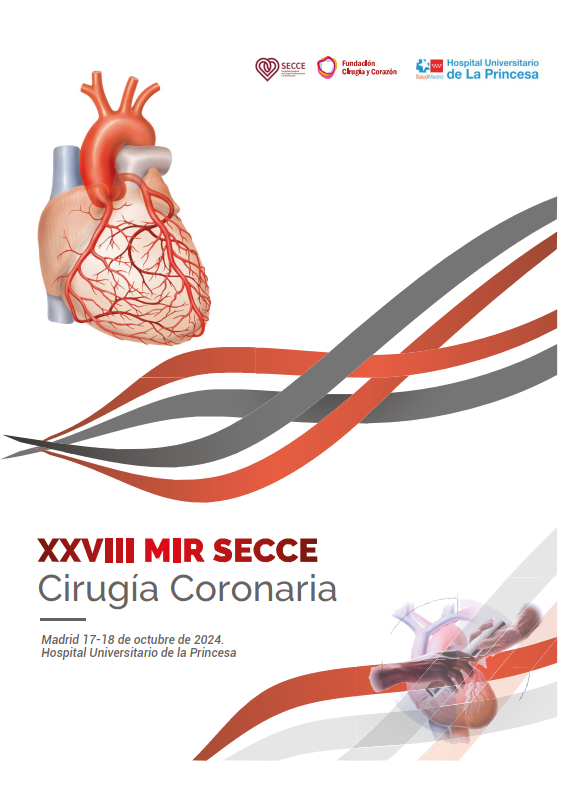Until now, most studies comparing TAVI and surgery have relied almost exclusively on transfemoral procedures. In this context, this study stands out as the largest series to specifically evaluate the transcarotid approach as the access route for TAVI.
A total of 786 patients were included (352 SAVR and 434 TC-TAVI) treated between 2010 and 2023. After 1:1 propensity score matching, 182 patients were analyzed in each group, with a mean age of 75 years and a mean STS score of approximately 3.6%, consistent with a low-to-intermediate surgical risk profile. The primary endpoint was a composite of all-cause mortality, stroke/transient ischemic attack (TIA), or valve/procedure-related rehospitalization at 30 days and 1 year, according to VARC-3 definitions.
At 30 days, the composite endpoint occurred significantly less often after TC-TAVI (4.3%) than after SAVR (12.6%; HR 2.93; p < .05). During hospitalization, the surgical cohort experienced higher rates of major bleeding, new-onset atrial fibrillation (40%), and acute kidney injury (grade 2–4), whereas the TC-TAVI group presented more vascular complications and greater need for permanent pacemaker implantation (15.9% vs 4.4%). Median hospital stay was shorter after TC-TAVI (4 vs 7 days).
At 1 year, there were no significant differences in the primary composite endpoint (19.7% SAVR vs 12.7% TC-TAVI; HR 1.64; nonsignificant) or in mortality and stroke when analyzed separately. Valve-related rehospitalization was more frequent following surgery. In addition, valve hemodynamics were more favorable after TC-TAVI (mean valve area 1.84 cm²; mean gradient 11.7 mmHg) compared with SAVR (1.47 cm²; 14.4 mmHg).
The authors concluded that transcarotid access represents a safe and effective alternative to surgical replacement in carefully selected patients who are not candidates for transfemoral TAVI, with a clear early clinical advantage and comparable outcomes at one year.
COMMENTARY:
The practical message is clear: transcarotid TAVI provides outcomes at least comparable to surgery—and even superior in the early postoperative phase—provided it is performed in centers with extensive experience and surgical leadership. These are not theoretical results. The data come from the Quebec Heart and Lung Institute, one of the world’s leading centers for this access route, where the procedure is surgeon-led, performed in a hybrid environment, and carried out under full surgical control of the carotid artery. A reminder that this technique succeeds when precision, patient selection, and accumulated expertise align.
Beyond the headline, several points deserve closer attention:
- Clear early advantage. At 30 days, combined morbidity was threefold higher after surgery than with TC-TAVI (12.6% vs 4.3%). Classical postoperative complications—bleeding, atrial fibrillation, and acute kidney injury—disproportionately affect frail patients or those with vascular comorbidities.
- Acceptable technical trade-off. The transcarotid approach requires careful attention to conduction system management and vascular access control, with higher rates of pacemaker implantation and vascular complications, yet without increased stroke risk (2.7% TC-TAVI vs 3.8% SAVR). Systematic exclusion of carotid stenosis >50% and full surgical mastery of the access are essential for safety.
- Clinical efficiency. Shorter length of stay (4 vs 7 days), faster recovery, and superior valve hemodynamics. For patients unsuitable for transfemoral access, the transcarotid route currently offers the best balance between procedural safety and early discharge.
- What is missing: this is a single-center observational study, without year-to-year matching, with potential selection bias, and lacking both clinical and durability data beyond one year of follow-up. The composite endpoint included “procedure- or valve-related rehospitalization,” a soft component that may influence early benefit. Nevertheless, the findings provide a solid basis for considering transcarotid access as a preferred alternative when femoral anatomy is unfavorable.
At our center in Coruña, with more than 500 nontransfemoral TAVIs and over 210 recent TC-TAVI procedures, the results reinforce these conclusions: 30-day mortality 1.6%, stroke 0.8%, vascular complications 1.6%, and pacemaker implantation 12%, in patients with a mean age of 82 years and a mean EuroSCORE II of approximately 7%. These figures—despite involving a more fragile population—match or even surpass those of the Quebec series. The key lies in surgical control of the access site, precise preprocedural imaging, and standardized technique (in our case, predominantly using balloon-expandable SAPIEN 3® or MYVAL® prostheses).
It is essential to emphasize that surgeons must remain fully engaged in all nontransfemoral TAVI procedures, particularly in transcarotid access. We have both a moral and professional duty to participate actively alongside interventional cardiologists—not in competition, but in collaboration—in a procedure that has proven to be a genuine breakthrough, offering excellent and reproducible outcomes. The growing evidence supporting transcarotid TAVI represents a real opportunity for cardiac surgery departments in Spain to become fully involved in this technique, which also drives continuous improvement in the broader field of transcatheter therapies increasingly present in our practice: TEVAR, percutaneous device implantation, ventricular assist devices, and minimally invasive surgery, among others.
The study by Del Portillo et al. confirms that transcarotid access is not a rescue route but a true first-line alternative when femoral anatomy is unsuitable. The critical elements are organization and surgical training: well-prepared teams, standardized protocols, and systematic outcome assessment. The challenge ahead is not only technological but cultural—recognizing that a properly managed carotid artery is now as safe as the transfemoral route and, in many cases, the best option for the right patient.
Transcarotid TAVI embodies the ideal balance between innovation and surgical rigor: a technique that merges the best of both worlds and defines the future of minimally invasive structural heart therapy.
REFERENCE:
Del Portillo JH, Cepas-Guillén P, Kalavrouziotis D, Dumont E, Porterie J, Paradis JM, et al. Transcarotid versus surgical aortic valve replacement for the treatment of severe aortic stenosis. Circ Cardiovasc Interv. 2025 Apr;18(4):e014928. doi:10.1161/CIRCINTERVENTIONS.124.014928.



